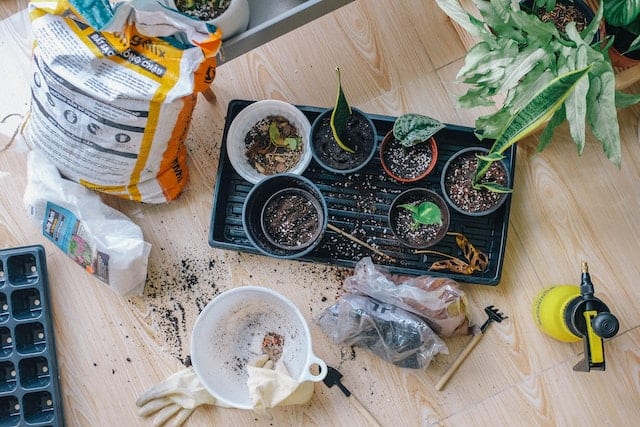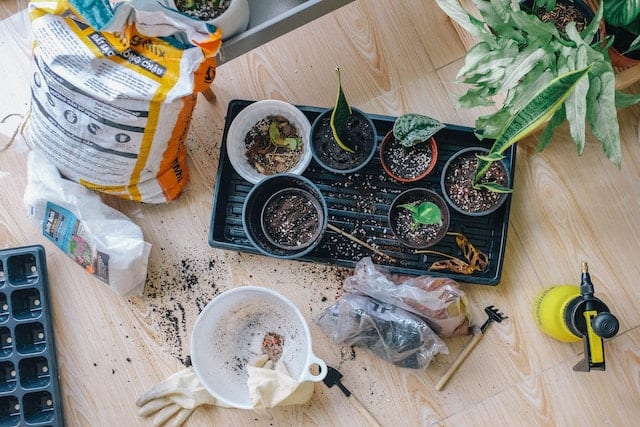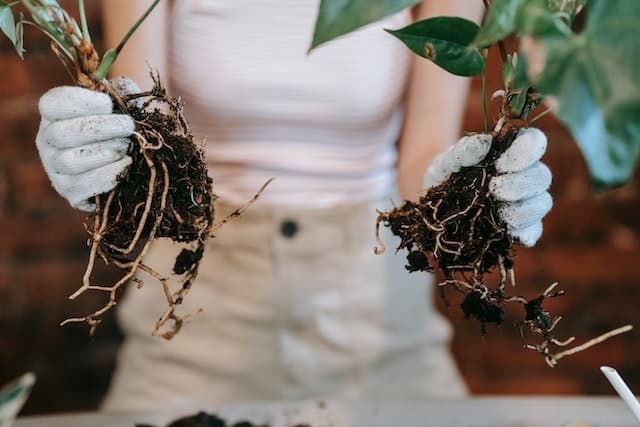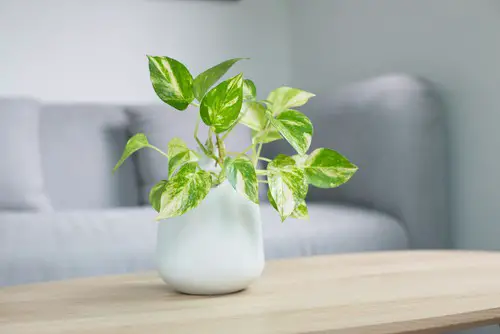Pothos are beautiful plants that are easy to maintain, even for a beginner. But like other household plants, pothos or Devil’s Ivy may begin to lose their shine when they’re getting old. Growing more pothos plants is a simple and enjoyable method to grow your collection.
At this point, propagating the plant to get fresh ones is a good alternative. But can you propagate pothos without leaves?
Can You Propagate Pothos Without Leaves?

Yes, it is possible to propagate pothos without leaves. Fortunately, this wouldn’t prevent the plant from growing beautifully well. However, you need to do the propagation correctly to get the best result.
What methods can you use for propagating pothos if you’re not using leaves? And how can you do it correctly? In this article, we will provide detailed answers to these questions and others. Just keep on reading!
How to Propagate Pothos Without Leaves
One simple way in which you can propagate your pothos is by using stem cuttings. Before starting the propagation process, you’ll need some gardening materials. Take a look at some of them below:
Things You’ll Need
- A jar (if you’re using the water propagation method).
- Sterilized pruning shears or scissors
- Good Soil mix
- Quality pot with drainage holes
- Rooting hormone (if you’re using the soil propagation method)
Now, we’re going to explain the stem-cutting method of propagation in water and soil.
Pothos Cuttings Propagation in Water

Many plant enthusiasts prefer to propagate their pothos in water because it is easier. Besides, this method gives them the chance to see how their cuttings change from one form to another. In addition, roots grow faster when you propagate your pothos in water.
If you want to try the water propagation method, follow the simple tips below:
- First, choose a stem from a healthy plant and identify the nodes. Often, the nodes appear below the leaf stem, and it is also where new stems break out.
- Using sterilized shears or scissors, cut right beneath the node. Make sure the piece has at least 3 to 4 nodes and 1 or 2 healthy leaves.
- Snip off the bottom leaves from the stem as they can fall into the water. This is to prevent the leaves from turning brown and rotting inside the water.
- Fill the jar with clean water and place the stem with its nodes inside it. Ensure that the leaves are above the water’s surface.
- Locate an area with indirect sunlight and place the cuttings there.
- Change the water every 5 days to keep bacteria and algae away.
- Everything being equal, the cuttings should begin to grow roots after 7 to 10 days.
- When the roots are about 2 inches long, usually after 3 to 6 weeks, fill the pot with a well-draining soil mix. Then, transplant the pothos cuttings.
- Always mist the soil for the first few weeks to keep it moist until the roots develop well.
Pothos Cuttings Propagation in the Soil

While the pothos soil propagation method is not popular, it is equally effective. So if you want to try out this method, it’s pretty straightforward.
Select a healthy or mature plant and take stem cuttings from it. Make sure the cuttings have leaves and nodes, like when you want to use the water propagation method.
Then, follow the simple tips below:
- Get the rooting hormone and dip the cut end of the stem cuttings into it.
- Select a small pot with drainage holes and fill it with a quality well-draining soil mix.
- Using a stick or your finger, make a tiny hole into the soil and place the cutting into it. Ensure the nodes are inside the soil and the leaves are above it.
- Choose a place with bright, indirect sunlight and place the cuttings there.
- Mist the soil moderately to prevent overwatering the cuttings.
- After 3 to 4 weeks, gently pull the cutting from the soil. If it doesn’t yield easily, it means its roots have developed.
When is the Best Time to Propagate Pothos?
Whenever you want to propagate pothos, do this in the spring or summer months. This is the plants’ growing season. There’s a high chance that the propagation will be unsuccessful during winter and fall. Moreover, the plants you get your cuttings from will likely not heal during these periods.
Similar posts:
Final Thoughts
From the tips in this guide, we are confident you can now propagate pothos without leaves quickly and easily. Pothos are amazing and beautiful houseplants that require minimal maintenance.
Nevertheless, factors such as sunlight, water, temperature, soil, and fertilizers play a key role in their health and beauty. As long as you give your pothos what they need, you’ll be able to keep one of nature’s wonders in your home.
Frequently Asked Questions
What Do I Do If My Pothos Have No Leaves?
First, identify the reasons your pothos are not growing leaves. Factors responsible for this problem include pest infestation, overwatering, insufficient nutrients, and little or no light.
When you understand why your pothos has no leaves, it will be easier to propose a long-term solution. You may need to change the location of the plant, change the watering schedule, repot it, or add fertilizer to it.
Can You Propagate Pothos Without a Node?
No, it is impossible to propagate your pothos without a node. For new roots to develop in a plant, they must have a node, no matter how small.
Nodes are one of the most important parts of a plant. They are the spots where leaves, twigs, and buds emerge from a plant. In addition, nodes are useful for structural support, biological processes, and healing in plants.
Therefore, propagation cannot take place in the part of a plant that doesn’t have nodes.
Does Pothos Grow Faster in Water or Soil?
Most of the time, pothos grow faster in soil than in water. But when it comes to propagation, pothos in water will develop roots faster than those in soil.
However, the roots can get used to being in the water. So it will probably take a longer time for them to get used to being in the soil after transplanting.

Hey, I’m Lisa and I’ve been an avid gardener for over 30 years. I love writing, talking and living in the garden! Feel free to connect with me on my socials below

